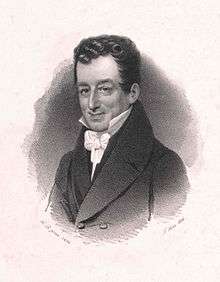Leimen (Baden)
Leimen is a town in north-west Baden-Württemberg, Germany. It is about 7 km (4.3 mi) south of Heidelberg and the third largest town of the Rhein-Neckar district after Weinheim and Sinsheim. It is also the area's industrial centre.
Leimen | |
|---|---|
 Town hall | |
_COA.svg.png) Coat of arms | |
Location of Leimen within Rhein-Neckar-Kreis district   | |
 Leimen  Leimen | |
| Coordinates: 49°20′53″N 08°41′28″E | |
| Country | Germany |
| State | Baden-Württemberg |
| Admin. region | Karlsruhe |
| District | Rhein-Neckar-Kreis |
| Government | |
| • Lord Mayor | Hans D. Reinwald |
| Area | |
| • Total | 20.64 km2 (7.97 sq mi) |
| Elevation | 118 m (387 ft) |
| Population (2018-12-31)[1] | |
| • Total | 26,968 |
| • Density | 1,300/km2 (3,400/sq mi) |
| Time zone | CET/CEST (UTC+1/+2) |
| Postal codes | 69181 |
| Dialling codes | 06224, 06226 |
| Vehicle registration | HD |
| Website | www.leimen.de |
Leimen is located on the Bergstraße (Mountain Road) and on the Bertha Benz Memorial Route.
In the context of a communal reform in the 1970s, Leimen was newly created from the villages Leimen, Gauangelloch and Sankt Ilgen. In 1981, the state government of Baden-Württemberg granted Leimen the privilege to be called "town." When Leimen's population exceeded 20,000 in 1990, the city council applied for elevation to a Große Kreisstadt which was granted by the state government on April 1, 1992.
History
The first documentary record of Leimen is from 791, when both the Lorsch Abbey and the Diocese of Worms owned land there. First records of the districts are from 1270 for Gauangelloch (a document supposedly from 1016 was found out to be a fake), 1312 for Lingental, around 1300 for Ochsenbach and 1100 for Sankt Ilgen, then called bruch, an Old High German word for bog.
In 1262, the lords of Bruchsal gave Leimen to the Electorate of the Palatinate as a fiefdom and from 1464 on Leimen was part of the Palatinate. In 1579, Leimen was granted the right to celebrate an annual fair and became a market place in 1595. In 1674, Leimen was partially destroyed.
Mayors
- Johann Ludwig Waldbauer 1838–1844
- Heinrich Seitz 1845–1876
- Jakob Rehm III. 1876–1882
- Leonhard Schneider 1882–1883
- Ludwig Endlich 1883–1896
- Christoph Lingg 1883–1923
- Jakob Weidemaier 1923–1933
- Fritz Wisswesser 1933–1945
- Jakob Weidemaier 1945
- Georg Appel 1946–1948
- Otto Hoog 1948–1976
- Herbert Ehrbar 1976–2000 (from 1992 Lord Mayor)
Lord Mayor
- Wolfgang Ernst 2000–2016
- since 2016: Hans D. Reinwald
People, culture and architecture
Leimen consists of the Leimen (proper), nowadays called "Leimen (Mitte)", and the four boroughs Gauangelloch, Lingental, Ochsenbach and Sankt Ilgen.
Despite its industrial roots, Leimen's downtown has maintained a certain quaintness. It is an active town, with a regular cycle of festivals and activities.
At Ochsenbach, there is the NDB NKR.
Notable people

- Joseph von Henikstein, (1768-1838), businessman and financier, art patron and friend of Wolfgang Amadeus Mozart
- Bert Hellinger, (born 1925), psychotherapist, associated with a therapeutic method best known as Family Constellations, book author
- Michael Peter, (1949-1997), field hockey player, gold medallist of the 1972 Summer Olympics
- Rainer Zietsch (born 1964), footballer
- Ralph Götz, (born 1967), rugby player and administrator
- Boris Becker, (born 1967), tennis player, former World No. 1
- Clemens von Grumbkow, (born 1983), rugby union player
- Akeem Vargas, (born 1990), basketball player, grew up in Leimen
Twin towns
- Mafra, Portugal.[2]
- Castanheira de Pera, Portugal
- Tigy, France
- Tinqueux, France
- Cernay-lès-Reims, France
- Kunín, Czech Republic
- Elek, Hungary
- Rodewisch, Saxony and
- Langenhagen, Lower Saxony, are partner cities of Leimen.
References
- "Bevölkerung nach Nationalität und Geschlecht am 31. Dezember 2018". Statistisches Landesamt Baden-Württemberg (in German). July 2019.
- List of Portuguese twin-towns - page 383 Archived 2011-07-25 at the Wayback Machine